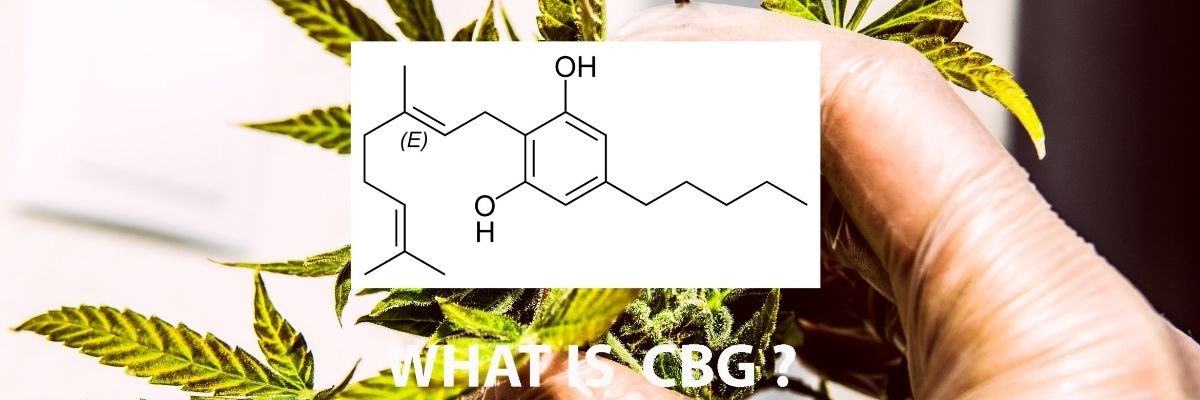
If you have stumbled upon this site you are more than likely already aware of the numerous benefits of CBD. Research is being done all over the world in order to validate the claims that CBD can be used to manage pain and assist with symptoms such as arthritis, anxiety, psoriasis, and insomnia. CBD’s benefits are now not just limited to humans, you can now even buy CBD products specifically designed to help aid your furry friend’s ailments.
However, just when you thought you had got your head around CBD….in walks CBG. We are here to explain exactly what CBG is, its benefits, and find out how CBG differs from our old friend CBD.
A quick low down on cannabinoids
The cannabis plant, like all plants, is made up of several chemical compounds. The primary components in the plant are the active cannabinoids, known as Phytocannabinoids. There are also other cannabinoids and endocannabinoids, terpenes, flavonoids, and a whole lot more, but for the purpose of today’s discussion, let’s focus on just the cannabinoids.
The human body has an endocannabinoid system designed to receive these cannabinoid compounds and use them to achieve a healthy equilibrium.
Historically, most people have been familiar with the cannabinoid THC: The compound most famous and notoriously known for creating a ‘high’. Despite the fact that THC has profound healing powers similar to CBD, it remains stigmatized as the “bad” part of cannabis. That said, of all the cannabinoids present in the cannabis plant, THC is the only compound with the ability to intoxicate.
So, What Is CBG?
CBG stands for cannabigerol. CBG is not a common cannabinoid, large quantities are not found within the cannabis plant. CBG is the precursor to CBD, CBC, and THC. It is sometimes referred to as the stem cell. This is because it is the first cannabinoid acid to develop in the cannabis plan. But what does this actually mean? CBGA (the acidic, inactive form of CBG) changes, when it breaks down it becomes the base molecule that other cannabinoids form from, including THC, CBD, and CBC.
What’s the Difference Between CBD and CBG?
As we have just discussed, CBG helps make CBD, so while they’re both cannabinoids, they are very different compounds within the cannabis plant. They also serve different purposes, whilst more research is needed, they may help treat different ailments, this is despite many believing there to be some potential pharmacological overlap.
A very important fact is that both CBD and CBG are non-psychotropic, meaning they won’t affect your state of mind and cause a ‘high’ effect that is seen in THC. They can, however, potentially affect your mind in relation to relieving anxiety and depression.
Due to CBG only being found in trace amounts in dried plant material, it is only very recently that manufacturers have begun to focus their attention on optimising CBG levels in products like CBD oils, supplements, and salves. It’s clear that CBG is an essential cannabinoid, but it is still unclear exactly how to use it to our benefit due to the small volume produced by the plant.
Like CBD, CBG may counteract the intoxicating effects of THC, some studies of CBG seem to show that it activates the CB1 receptor just as CBD does, which essentially decreases psycho-activation.

What are the potential Benefits of CBG?
There has yet to be proven benefits in clinical trials, but there are some early studies showing that CBG may be a promising treatment for several conditions.
Research has already shown that CBG has some remarkable healing properties. While research continues to reveal new potential uses for CBG almost daily, early studies have indicated that it may be effective as a treatment for some of the most common conditions including:
CBG is Antioxidative
CBG could possibly be used to prevent or delay some types of cell damage. The antioxidant properties in CBG reduce damage-causing free radicals and raise one of the body’s own naturally occurring antioxidants, superoxide dismutase.
Links to reducing depression
CBG is believed to boost anandamide, the endocannabinoid responsible for increasing dopamine levels in the body and regulating sleep patterns. Balanced anandamide levels stimulate feelings well-being and happiness, while low levels are associated with a wide range of conditions including depression and schizophrenia.
CBG is possibly Anti-Inflammatory
Some studies have suggested that CBG has strong anti-inflammatory properties, making it a really exciting potential option for formulating topical treatments for ailments such as muscle and joint pains and arthritis. CBG could also be a powerful tool in treating gut inflammation on a cellular level.
CBG possible be used as an appetite stimulant
CBG has been noted to affect appetite and it interacts with several molecular targets that are known to be involved in the regulation of appetite.
Glaucoma
Whilst other cannabinoids have also been used to treat glaucoma, CBG has proven to be a particularly useful treatment for glaucoma, it helps reduce intraocular pressure.

Psoriasis and Eczema
Clinical trials of CBG topical formulations are already underway. Due to its inflammatory properties, CBG has been shown to be an effective treatment for eczema, psoriasis, and a number of other skin conditions.
Osteoporosis
CBG, along with other cannabinoids has been shown to be effective in promoting bone growth, healing fractures, and strengthening connective tissues. Currently studies are being done in order to consider CBG as a possible treatment for osteoporosis.
Overactive Bladder
Research conducted in 2015 found that among the major cannabinoids CBG was the most effective at reducing bladder contractions and alleviating the symptoms of overactive bladder.
CBG could be Antifungal and Antibacterial
Like all major cannabinoids, CBG exhibits antifungal, antibacterial, and antimicrobial properties.

Conclusion
Similar to CBD, there have been few reports of people suffering adverse side effects after consuming CBG on its own. However, there is still not enough research or information on the compound.
Whilst more scientific research is needed into the benefits of CBG, the initial signs are very hopeful. As people continue to learn more about the compound and the potential of CBG benefits, cannabis cultivators are now starting to develop ways to breed plants with high CBG concentrations, this particularly relevant in regards to the medical marijuana market.
As mentioned earlier, if you are consuming hemp in its entirety (either by smoking it, eating it, or through tinctures), you are still getting a little of cannabigerol in its natural form. Therefore, this means that you’ve been consuming the compound, albeit in tiny concentrations for a long time, it is only recently that researchers have started studying CBG more in-depth.
Disclaimer by CBD Guide UK:
CBD is sold as a food supplement, and as a result, It’s illegal to claim it treats, prevents, or helps cure an illness or disease. No health claims have been made in this article.
